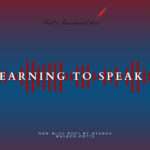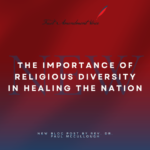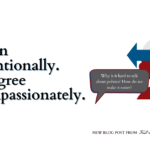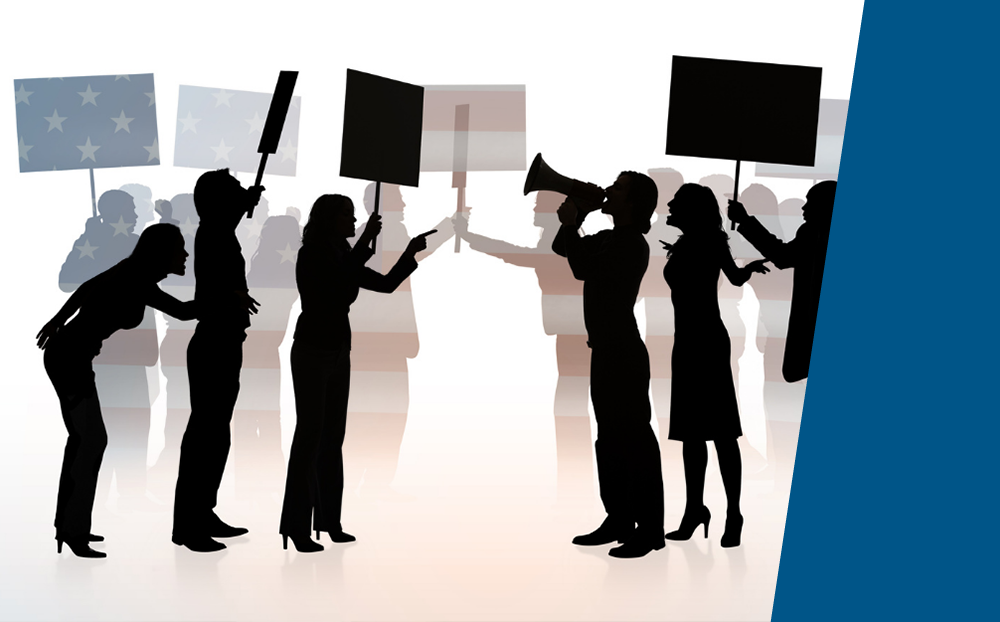
by | Nov 28, 2020 | Uncategorized
 Social psychologist and Stanford University Professor of Sociology Robb Willer is an expert in political polarization. His 2017 TEDx Talk on “How to Have Better Political Conversations” offers an in-depth glimpse into growing divisions among Americans across the political spectrum, comparing it to a disaster or zombie apocalypse movie:
Social psychologist and Stanford University Professor of Sociology Robb Willer is an expert in political polarization. His 2017 TEDx Talk on “How to Have Better Political Conversations” offers an in-depth glimpse into growing divisions among Americans across the political spectrum, comparing it to a disaster or zombie apocalypse movie:
There’s people wandering around in packs, not thinking for themselves, seized by this mob mentality, trying to spread their disease and destroy society.
So, how can we escape this trap of division, disinformation and disrespect in order to heal as a nation? Let’s dive deeper into Robb Willer’s TEDx topic to understand why divisions exist and what we can start doing about them.
Liberal vs. Conservative Values
In a sociological study conducted by Willer and his colleagues at the Polarization and Social Change Lab at Stanford, they found liberals and conservatives often adhere to different values. Whereas liberals typically prioritize equality, fairness and caring for others, conservatives reportedly prioritize loyalty, patriotism, moral purity and respect for authority.
The study’s design was fascinating in that it asked liberal-identifying participants to write a persuasive essay in favor of gay marriage and conservative-identifying participants to write a persuasive essay in favor of making English the official language in the U.S. Although the essays were intended to persuade the “other side,” both groups relied on their own values to convey their messages. As Robb Willer explained in his TEDx presentation:
When we go to persuade somebody on a political issue, we talk like we’re speaking into a mirror. We don’t persuade so much as we rehearse our own reasons for why we believe some sort of political position.
There’s nothing wrong with having your own values and beliefs, of course. But if you’re trying to persuade someone who believes in a very different ideology than yours, then it’s important to adapt your message to be more palatable for those on the “other side” or they likely won’t be as willing to listen to your viewpoints.
Leverage the Power of Moral Reframing
Robb Willer and his co-researcher Matthew Feinberg published their study’s results in the peer-reviewed journal, Social and Personality Psychology Compass in December 2019. In the paper, they laid out a highly effective persuasion concept called “moral reframing,” which they defined as a technique “whereby a position an individual would not normally support is framed in a way that is consistent with that individual’s moral values.”
This technique involves learning more about other people’s political beliefs and utilizing their language and values to reshape the way you communicate with someone who disagrees with your viewpoints. For instance, President Trump referring to the act of wearing a face mask as “patriotic” is arguably an example of moral reframing.
Similar to sales and marketing, persuasion isn’t about getting what you want. It’s about conveying your message in a way that makes the audience not only want to listen to you but also embrace what you have to say. If you’re not speaking the language of the “other side,” then compromise will be challenging to establish (if not impossible).
Change won’t happen overnight. America is deeply divided right now, but it doesn’t have to stay that way forever. As Robb Willer said at the end of his TEDx Talk:
We owe it to one another and our country to reach out and try to connect. We can’t afford to hate them any longer, and we can’t afford to let them hate us either. Empathy and respect. Empathy and respect. If you think about it, it’s the very least that we owe our fellow citizens.
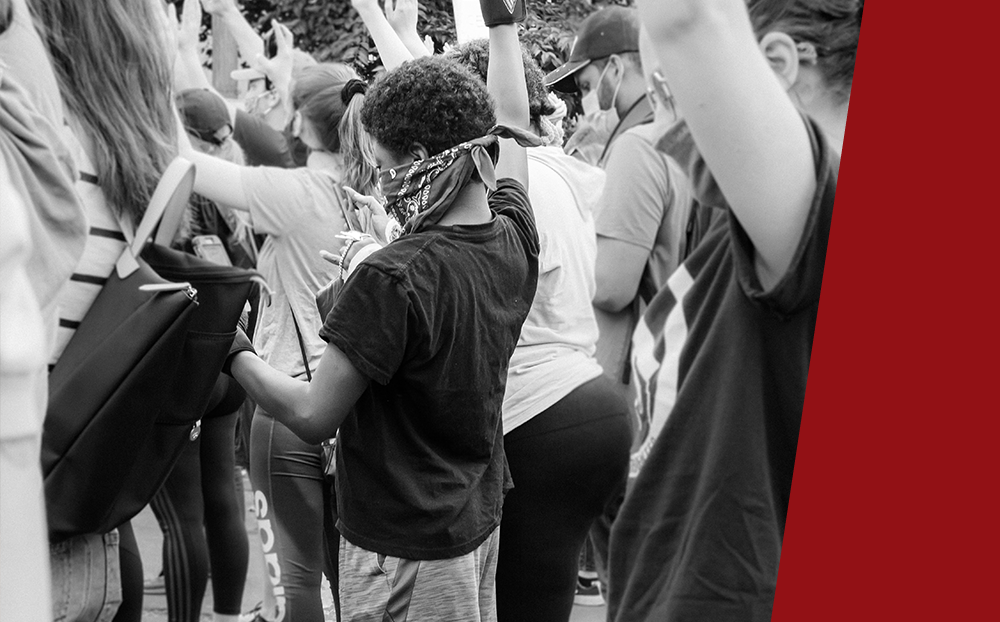
by | Nov 11, 2020 | Uncategorized
 According to a 2018 report from the Center for American Progress, just nine states and the District of Columbia require a full year of U.S. government or civics education for high schoolers, while 31 states require at least half a year and 10 states have no government or civics requirements at all. In an era where political polarization in the U.S. is at all-time highs, it’s concerning to think of the implications these arguably-outdated educational policies might have on future elections at the local, state and national levels.
According to a 2018 report from the Center for American Progress, just nine states and the District of Columbia require a full year of U.S. government or civics education for high schoolers, while 31 states require at least half a year and 10 states have no government or civics requirements at all. In an era where political polarization in the U.S. is at all-time highs, it’s concerning to think of the implications these arguably-outdated educational policies might have on future elections at the local, state and national levels.
If we are to protect our nation’s democratic foundations for generations to come, we must be putting more time and energy into promoting the value of civic literacy and engagement. In the exceptionally well-researched Peabody Journal of Education article, “Civic Education and the Paradox of Political Participation,” author Lora Cohen-Vogel describes a “paradox of political participation” in which sizable numbers of younger Americans are opting out of the voting process and engaging more in protests as means for enacting societal change.
Given the importance of protests throughout American history and the right to protest enshrined in the First Amendment of the Constitution, this “paradox” wouldn’t necessarily be a bad thing if it weren’t for the low voter turnout rates associated with it. While increased access to flexible voting options — like mail-in ballots in 2020 — may turn the tides against this trend, the fact remains that our nation’s civic educational programs are in desperate need of a makeover if we hope to restore trust in our democratic institutions and encourage greater critical thinking among current and future voters alike.
Whether you’re a parent, teacher, youth sports coach, scouting leader, community volunteer or someone who’s just very passionate about the First Amendment, democracy and civic engagement, you can make a difference in the lives of youth by sharing the valuable lessons of civic literacy and political participation. If we can’t consistently rely on our state and/or federal education policies to ensure students are well-versed in civic affairs, then it’s up to us to fill in the gaps. We can’t afford to rest on our laurels, simply hoping that our middle and high schoolers are developing adequate knowledge and skills to become informed, engaged citizens prior to graduation.
The importance of civic education is further demonstrated by the article, “What Social Scientists Have Learned About Civic Education: A Review of the Literature,” in which author David E. Campbell argues that well-designed civic education programs have strongly correlated with a positive, long-lasting impact on the civic engagement rates of young Americans. Campbell explains that four aspects – class instruction, extracurricular activities, community service, and a school’s ethos – are essential to increasing civic engagement among youth. However, the aforementioned Center for American Progress report found that only Maryland and the District of Columbia require community service as a prerequisite to receiving a high school diploma.
Additionally, the U.S. Census Bureau found that students engaged in extracurricular activities were also more likely to be highly engaged in school:

U.S. Census Bureau findings on engagement in extracurricular activities and overall school engagement.
With this information in mind, it’s our civic duty as American adults to not only engage in our own political advocacy efforts, but also encourage our nation’s youth to get involved and stay involved as well. Whether you have kids or not, the lack of rigor in many states’ civic education programs (or complete lack thereof) can impact all of us as we continue to face enormous challenges like the seemingly endless stream of disinformation swirling around online and ongoing concerns related to First Amendment protections.
So, what will you do to pass along the torch of civic literacy for future generations?

by | Oct 28, 2020 | Uncategorized
 2020 is truly a year for difficult conversations. Rates of polarization in the U.S. seem to be constantly on the rise, and frustrations spurred by the pandemic have led to a widespread breakdown in clear, collaborative and constructive conversations in our society.
2020 is truly a year for difficult conversations. Rates of polarization in the U.S. seem to be constantly on the rise, and frustrations spurred by the pandemic have led to a widespread breakdown in clear, collaborative and constructive conversations in our society.
Inspired by the Difficult Conversations Workshops at our national symposium, let’s explore how a little psychological concept called “self-distancing” can lead to huge positive benefits in difficult conversations you may be having with your own family, friends, colleagues and neighbors:
What Is Self-Distancing?
There are two basic sides involved in almost any interpersonal encounter: self-immersed perspectives and self-distanced perspectives. Simply put, a self-immersed perspective keeps your mind focused on internal factors: your own needs, wants, interests and desires. On the flip side, a self-distanced perspective accounts for one’s own interests but views them as similarly important to the interests of other parties in a conversation.
With this in mind, self-distancing (not to be confused with this year’s popular phrase, “social distancing”) refers to processing negative emotions or events in adaptive (healthy) ways.
While it can be immensely challenging (and perhaps bruising to our egos) to back down or listen to others when we’re absolutely convinced that we’re “right,” doing so is a crucial step towards preserving our relationships with others and cultivating meaningful conversation climates. But the benefits aren’t primarily for other people; according to an article published in Greater Good Magazine (backed by the University of California, Berkeley’s Greater Good Science Center), self-distancing offers a host of personal benefits, including:
- Greater capacity for adaptive self-reflection (as opposed to maladaptive self-reflection, which magnifies negative emotions instead of constructively processing them)
- Reduction in aggressive, angry thoughts and behaviors
- Greater ability to make rational, clear-headed decisions
So how can you successfully self-distance from negative emotions without forgoing that difficult conversation entirely? Let’s see what the research has to say:
Change Your Self-Talk
Researchers have suggested that changing the way you talk to yourself (sometimes referred to as “intrapersonal communication”) can be a powerful mechanism in which you emotionally distance yourself from tense interpersonal interactions and/or maladaptive self-reflections and ruminations.
One of the best self-talk strategies involves changing the pronouns in which you refer to yourself. Specifically, referring to yourself in the second-person “you” pronouns (as though you’re speaking with a friend) or third-person (he/she/they or your name) can help you constructively assess negative thoughts and process upsetting emotions when engaging in difficult conversations with others.
Embrace Wise Reasoning
Another strategy for reigning in your emotions to more effectively engage in difficult conversations with others involves developing your wise reasoning skills. There are four central tenets to wise reasoning, including: (1) recognizing the limits of your own knowledge (intellectual humility), (2) recognizing and appreciating larger issues involved, (3) sensitivity to changes in social relationships, and (4) a willingness to compromise or meaningfully consider other opinions besides your own.
Wise reasoning is important for self-distancing because it encourages us to recognize and accept the fact that we don’t have all the answers and that our opinions are just that: subjective opinions. Not objective reality. Once you can genuinely accept the possibility that you could be wrong (or simply unaware of information that may change your mind), you’ll be in a much better position to take other people’s concerns more seriously and keep your emotions in check when dealing with an interpersonal conflict.
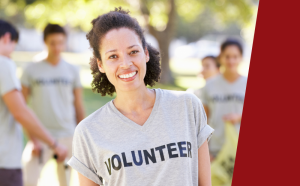
by Dan | Oct 14, 2020 | Uncategorized
 Voting is one of the most widely-recognized forms of civic participation, but it’s certainly not the only one. Civic engagement is typically defined as people coming together to socialize, advocate, converse, and make a difference in their communities, and it’s important for everyone to get involved in some meaningful way to sustain the community and help its members thrive.
Voting is one of the most widely-recognized forms of civic participation, but it’s certainly not the only one. Civic engagement is typically defined as people coming together to socialize, advocate, converse, and make a difference in their communities, and it’s important for everyone to get involved in some meaningful way to sustain the community and help its members thrive.
Since citizenship is not a spectator sport after all, here are some additional ways to boost your own civic participation and positively impact people around you as a result of your good works:
Engage in Community Conversations
Did you know something as simple as talking or listening can be considered forms of genuine civic engagement? By seeking out and joining conversations — whether they’re held virtually or in-person — you’re playing an active role in shaping your community’s future just by showing up.
You can discover what conversations, public hearings, dialogues and debates are happening in your community by checking your local government office’s website, browsing local events in the newspaper or on Nextdoor, or by visiting the websites of your favorite advocacy organizations to see if and when they’re hosting civic events (such as First Amendment Voice’s coffee talks and annual national symposium).
Volunteer for a Nonprofit Organization
Volunteering is arguably the second most well-known form of civic engagement (after voting). It also has several positive health benefits for participants, such as reduced feelings of isolation, lowered risk for cardiovascular disease, lowered rates of anxiety and depression, and reduced risk of developing cognitive impairments later in life.
Millions of hours of volunteer labor go into supporting nonprofits’ activities, programming and events every year. Without volunteers, many of these community-driven organizations would struggle to operate and serve those who need them most. If you want to get involved beyond the ballot box, contact nonprofits in your area to ask about volunteer opportunities. To become even more engaged as a citizen, consider joining a civics-centered nonprofit organization or donate money to a civic cause.
Participate in Community Clean-Up Events
Perhaps your schedule is too full to add a regular volunteering commitment. How about joining a trash pick-up event once or twice per month as a compromise? Many community organizations — some of them registered 501c3, others just informal groups of like-minded folks — host weekly or monthly clean-up events, particularly in areas with high public use such as parks, beaches, trails, etc.
You can easily find a community clean-up in your area by Googling your city or county’s name and “community clean-up” or “trash pick-up events.” You should be prepared to bring your own supplies (gloves, trash bag, hand sanitizer, etc.) and consider donating additional resources to the group you clean up with, if your financial circumstances allow for it.
Join a Club or Recreational Sports Team
Last but not least: did you know that participating in a hobby or sport with other people in your community can be considered a form of civic engagement, too? It’s true! When you join a recreational sports league or join a hobbyist club, you’re regularly interacting with fellow members of the community, which could also involve conversations about the community and social support for other members of the group.
As you can see, there is no shortage of ways to get involved as a citizen beyond simply voting for candidates and propositions each year. If you have additional strategies for becoming a more active member of your community, please share them with us in the comments!

by Dan | Sep 23, 2020 | Uncategorized
 Misinformation is all around us, and it’s continuing to play a massive, behind-the-scenes role in both our contemporary politics and social lives. As the director-general of the World Health Organization said at the Munich Security Conference in 2020, “We’re not just fighting an epidemic; we’re fighting an infodemic.”
Misinformation is all around us, and it’s continuing to play a massive, behind-the-scenes role in both our contemporary politics and social lives. As the director-general of the World Health Organization said at the Munich Security Conference in 2020, “We’re not just fighting an epidemic; we’re fighting an infodemic.”
Social media tends to be one of the biggest arenas where the spread of misinformation occurs. Indeed, the International Foundation for Electoral Systems published a report in 2019 that examined the various ways in which social media, disinformation and technological systems could influence electoral outcomes.
In the paper, the IFES refers to the issue of social media and disinformation as a “fundamental threat to the integrity of elections worldwide,” though the threat clearly goes beyond politics to include areas such as public health, natural disasters, and mass shootings, to name a few.
Since social media platforms are rife with misinformation and companies like Facebook have been dragging their feet on developing faster, more accurate systems for fact-checking and myth-busting, it’s important that citizens become empowered to independently combat the spread of misinformation within their own social networks.
Ask Yourself: Do the Facts Align with Reality?
Our March blog post offered some excellent pointers for detecting fake news online. This is an important first step in the process to effectively combat misinformation online. Identifying misinformation can be as simple as asking yourself if the facts align with reality and checking other sources to see if they’re reporting similar incidents.
Vox‘s guide to fighting fake news and conspiracy theories also recommends that you engage more critically with articles to uncover potential problem areas, such as a lack of external sources within the article, questionable credibility of the author (or no author at all) and the publisher’s reputation.
Once you’ve thoroughly vetted a source for an article shared by someone in your social network, you could respond by either offering alternative sources with greater credibility, respectfully asking the person who posted a questionable source to justify how or why it’s accurate or offer a brief, line-by-line explanation for how the story doesn’t match reality (your mileage may vary on this last one; in today’s hyper-polarized social media climate, it’s important proceed carefully when deciding whether to publicly call someone out for posting misinformation, regardless of their intentions).
Ask About the Source’s Accuracy
According to a study by Columbia University and the French National Institute in 2016, 59% of links on social media were never clicked prior to being shared. This is concerning on many levels, particularly when you consider the enormous power of persuasive headlines and catchy imagery to convince social media users to share content with potentially thousands of other people.
Obviously, reading the article before sharing it would be a good practice for your own social media habits, but what if you’re confronted with a friend or family member who is sharing links without reading them thoroughly beforehand?
A newer study published in Psychological Science in June 2020 found that “people share false claims about COVID-19 partly because they simply fail to think sufficiently about whether or not the content is accurate when deciding what to share.” In other words, by directly asking someone about a source’s accuracy, they are more likely to put in extra cognitive effort to discern whether the information is true or false, compared to when nobody confronts them on a source’s accuracy prior to sharing.
Leverage Credible Sources Against Disinformation
Another tool in your anti-misinformation arsenal is the plethora of high-quality, mostly-objective sources that exist to provide the most accurate information possible to their audiences. You can find out which sources are considered the most objective by viewing the Media Bias Chart from Ad Fontes Media. You might also want to share the chart with your own social network to support your followers’ digital literacy education.
In the future, we can probably expect to see more proactive fact-checking initiatives rolled out from social media companies. In the meantime, it’s up to everyday citizens like us to reach out to family members or friends who post blatantly untrue (or even subtly misinformed) information on social media to share the facts, limit the spread of disinformation within our own social circles, and promote greater media literacy for people of all ages.

by Dan | Sep 9, 2020 | Uncategorized
 COVID-19 has upended most of our lives in at least some significant ways, but that hasn’t stopped religious individuals and groups from continuing to provide support for the vulnerable folks who need it most. Since many religions involve some aspect of community service, this article explores how different individuals and organizations have supported the wider community so far during the course of the coronavirus pandemic:
COVID-19 has upended most of our lives in at least some significant ways, but that hasn’t stopped religious individuals and groups from continuing to provide support for the vulnerable folks who need it most. Since many religions involve some aspect of community service, this article explores how different individuals and organizations have supported the wider community so far during the course of the coronavirus pandemic:
Serving the Community
Hundreds, if not thousands, of religious groups have gone above and beyond to serve their communities during the COVID-19 outbreak. There are simply too many wonderful acts of kindness to mention all of them here, but some of the highlights have included:
Donating Masks
In March and April, it was incredibly challenging to get large quantities of masks made and distributed quickly in most places across the U.S. Fortunately, there were many religious groups and organizations who stepped up to the challenge by hosting their own mask donation drives and/or donating their own supplies of masks to members of the community.
Some notable stories that have come out in recent months include: Virginia Beach’s Rock Church donating 4,000 N-95 masks to healthcare workers, Fayetteville’s Manna Church donating 7,000 N-95 masks to healthcare workers after discovering an extra supply in their disaster relief storage, and members of Gateway Community Church in Merced, California refurbishing nearly 8,000 expired N-95 face masks — donated by the UCSF Medical Center — and delivering masks to protect vulnerable homeless people in the area.
In Indianapolis, Indiana, a couple of technology entrepreneurs partnered with over a dozen local churches to raised enough money for over 200,000 N-95 masks to donate to local healthcare workers. These are just some of the countless acts of extraordinary compassion and community service we’ve witnessed from various religious communities in the U.S. since the pandemic began, and many groups and institutions continue supporting their communities by making and donating masks to those who need PPE the most.
Join Us for the Religious Freedom Panel on September 17
Our Constitution Day Symposium webinar series are coming up and on September 17 at 11:00am EST, First Amendment Voice is hosting a Religious Freedom Panel that is freely accessible to members and non-members alike. Mark your calendars now and visit our website for more updates as the date comes closer! https://us02web.zoom.us/webinar/register/WN_FzSWibEvSU2eWHN_j9aCpA

 Social psychologist and Stanford University Professor of Sociology Robb Willer is an expert in political polarization. His 2017 TEDx Talk on “How to Have Better Political Conversations” offers an in-depth glimpse into growing divisions among Americans across the political spectrum, comparing it to a disaster or zombie apocalypse movie:
Social psychologist and Stanford University Professor of Sociology Robb Willer is an expert in political polarization. His 2017 TEDx Talk on “How to Have Better Political Conversations” offers an in-depth glimpse into growing divisions among Americans across the political spectrum, comparing it to a disaster or zombie apocalypse movie:

 According to a
According to a 






